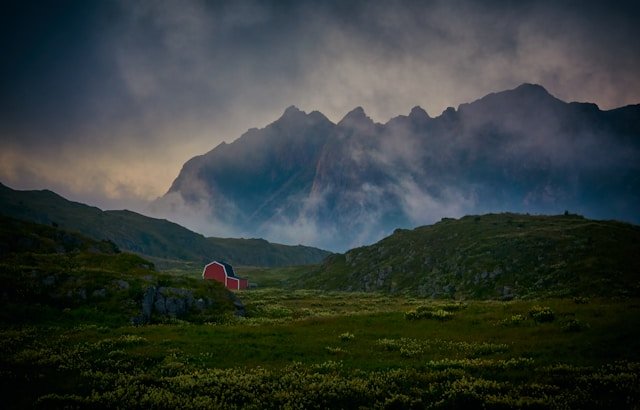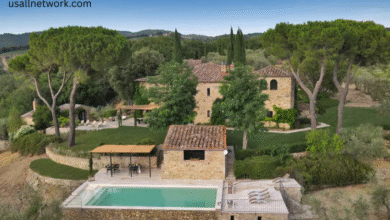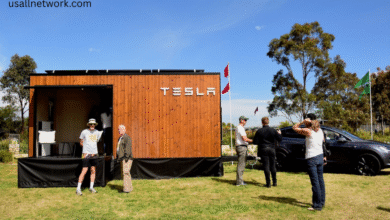Innovative Strategies for Buying a Second Home in Mountain Communities

Considering Mountain Living
There’s something universally appealing about the crisp air and striking views found in mountain towns. Ownership of a second home in such a setting promises more than weekend getaways; it offers an immersive escape into nature and the rhythms of a unique community. Dreamers browsing Tahoe City Homes for Sale are often imagining ski-in breakfasts or lakeside sunsets, but the realities of living and owning in these areas can be more nuanced. It’s crucial to consider how daily life will change—grocery store trips could take longer, and simple errands might require more planning, especially when winter snow blankets the landscape or mountain trails are closed for the season.
Prospective buyers would benefit from experiencing the area during high and low tourist seasons. This firsthand perspective reveals the ebb and flow of the community, the effects of tourism, and the pace of life when things quiet down. For example, mountain communities tend to host festivals and bustling markets in peak months but offer peaceful solitude in others. Whether you’re seeking quiet relaxation, an active social scene, or a mixture of both, knowing what you want out of the experience will make your investment more rewarding in the long run.
Weighing Financial Factors
When considering a second home, the financial commitment stretches well beyond the listing price. Many are surprised to learn how costs can spiral higher in mountain areas due to challenging weather, increased insurance premiums, and the potential for travel back and forth. According to the Forbes Real Estate Council, buyers should anticipate annual upkeep expenses between 1% and 4% of the property’s value. In areas prone to snow, ice, or forest exposure, roofing repairs, deck maintenance, and snow removal contracts can quickly add up.
- Budget for regular maintenance and upgrades—older cabins may need frequent repairs or system updates.
- Factor in travel: gas, airfare, vehicle wear and tear, and occasional hotel stays.
- Property taxes might vary significantly from your primary residence; verify current rates through the county assessor’s office.
- If the home is part of a resort or community, anticipate monthly HOA dues or occasional special assessments for shared amenities and maintenance.
Financing for a second property is a different process from a primary mortgage. Lenders commonly request higher down payments, stricter income verification, and robust credit scores. Veteran mortgage brokers in mountain communities understand these nuances and can help you compare costs, assess insurance needs, and spot requirements unique to the local market. Always ask upfront about utility costs, including heating bills for chilly winters and innovative technology upgrades that can help manage expenses remotely.
Choosing the Right Location
Selecting the best community for your second home takes research and introspection. Not every mountain town is focused on the same lifestyle—a vibrant ski resort area might offer buzzing nightlife and year-round events. At the same time, a secluded forest enclave delivers peace and natural beauty. Proximity to recreation, like hiking trails, lakes, or ski slopes, can also affect future resale and rental value. For families, closeness to schools or kid-friendly attractions may be a deciding factor.
Consider how you’ll get to and from your mountain retreat across the seasons. Some towns are reachable by highways and commercial airports, making regular visits convenient. Others might require navigating winding, snowy roads or seasonal closures if you travel frequently or are planning group get-togethers. Visiting during snowy winters and mellow springs gives you a true sense of access and accessibility. Less-popular locations can sometimes offer better long-term value, primarily as remote work trends fuel interest in serene living away from urban centers.
Assessing Home Types and Amenities
The type of home and its amenities play a huge role in your overall satisfaction and potential rental income. Many mountain buyers are drawn to the authentic charm of log cabins or timber-framed chalets. Still, newly constructed homes—with contemporary insulation, updated appliances, and energy-efficient windows—are gaining traction. These modern builds can reduce maintenance tasks and utility bills, which often soar in areas with extreme weather.
Desirable features in these regions include robust fireplaces, expansive decks for taking in the view, heated floors, and spacious mudrooms for gear and boots. The National Association of Realtors Magazine notes that buyers and renters are in high demand for outdoor hot tubs, renovated kitchens, and flexible sleeping arrangements (think bunkrooms and convertible spaces).
- Choose scratch-resistant flooring and easy-to-clean finishes for high-traffic areas.
- Prioritize energy-efficient upgrades—double-pane windows and insulated roofs keep heating costs in check.
- Double-check cellular coverage and high-speed internet availability if you work remotely.
If rental income is part of your plan, invest in design choices that will endure frequent use and provide amenities that enhance comfort, like washers, reliable heating, secure storage for gear, and detailed guest instructions for appliance use.
Planning for Seasonal Challenges
The environment deeply shapes mountain living. In many regions, winter brings heavy snowfall and challenges for property access and basic maintenance. Private roads may require personal contracts with snow plowing companies, and unseasonably warm spells might result in flooding or dangerous ice formation. Residents know the rhythm of the seasons—spring might mean checking for leaks, fall involves prepping pipes for freezing, and summer may bring wildfire precautions.
Understanding these cycles can help you prepare effectively. It’s wise to invest in annual service contracts for key systems like heating and fireplaces, stay in touch with emergency service providers, and stock up on essential supplies. Form bonds with full-time neighbors or hire a reputable property management service to check on things during extended absences. Preparedness protects your investment and ensures safety and comfort whenever you visit.
Getting to Know Community Rules
Community rules and regulations are critical, yet often underestimated, aspects of mountain homeownership. Most areas have zoning restrictions, Homeowner Association (HOA) policies, and local ordinances that impact rentals, landscaping, short-term use, and noise. For example, some mountain towns have cracked down on vacation rentals, requiring parking permits, noise curfews, or occupancy limits to preserve local character and neighbor satisfaction.
- Always request a complete set of community rules and guidelines before committing to a purchase.
- Be aware of restrictions on exterior paint colors, fences, or fire pit use daily in wildfire-prone areas.
- Ask seasoned neighbors or HOA board members about enforcement and exceptions.
A little upfront research can save future frustration and ensure your new home fits your lifestyle and local expectations.
Making the Most of Your Second Home
A well-planned second home is more than an investment—it’s a place to create lasting memories. Set up a regular maintenance schedule for inspections, deep cleans, and system checks to keep things running smoothly. Many homeowners build a trusted network of local handy people, property managers, and cleaning services to relax between visits. Being proactive and organized goes a long way towards keeping your property in top shape, whether lending it to friends, renting it to guests, or saving it for your family’s private use.
- Use a digital calendar or checklist app to schedule visits, repairs, and routine tasks.
- Join local online message boards or community social media groups to stay informed about weather, upcoming events, or pertinent changes in town regulations.
- If renting, create a comprehensive guest manual to answer common questions and provide guidelines for respectful usage.
Staying involved in the local scene and getting to know neighbors will deepen your sense of belonging—and may come in handy for emergency response or key recommendations.
Common Questions Answered
Are mortgages trickier for a second home?
It is common to experience a more complex process. Lenders usually require higher credit scores, larger down payments (sometimes 20-30%), and documentation showing you can manage both your primary and secondary properties. Consider working with mortgage experts who specialize in vacation properties and understand the nuances of the market you’re targeting.
Should you buy an unfurnished or furnished home?
The decision comes down to your goals. Furnished properties are instantly usable and appealing for short-term rentals, but often command a premium price and may not match your design aesthetic. Unfurnished homes offer more flexibility to create your retreat, but involve additional effort and investment to prepare for move-in.
What steps reduce long-term headaches?
- Insure comprehensively, including against hazards unique to mountain environments such as floods, landslides, or wildfires.
- Keep up with routine maintenance, especially for weatherproofing, heating, and security systems.
- Build rapport with local professionals—plumbers, electricians, roofers—in advance, so you are never left scrambling during a storm or emergency.
When all aspects are carefully considered, owning a second home in the mountains can become a source of joy, renewal, and even financial benefit for ddecades.



